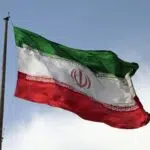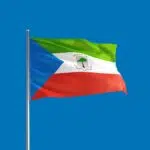The Khordad National Uprising in Iran is observed on June 5 every year. Also called the Khordad 15 Revolt, these events of the 1963 protests against the Shah Mohammad Reza Pahlavi dynasty are considered the starting point of the Islamic Revolution, and the anniversary is a public holiday in Iran. Iranians use the holiday to rest together with their families as well as reflect on their national and religious history. Parents also take this time to teach this history to their children as a way of preserving the knowledge for subsequent generations.
History of Khordad National Uprising in Iran
The Khordad Uprising happened on June 5, 1963, when Ayatollah Ruhollah Khomeini was arrested because he denounced the monarch of Iran Mohammad Reza Shah Pahlavi, and his Western-supported government. Khomeini’s arrest peeved Iranians and large crowds took to the streets to express their opposition to the arrest. This became a basis for building resistance against Iran’s Shah and his Westernized regime.
The entire nation of Iran was under upheaval for six days, and this birthed the Movement of Khordad 15. The government, taken by surprise, immediately declared martial law, with a curfew between 10 p.m. and 5 a.m. The police and military violently suppressed the protesters, killing several civilians in different cities. The demonstrators were confronted with military tanks and soldiers with shoot-to-kill orders from the government. At least 380 people were killed or wounded during this encounter.
Khomeini was exiled in 1964, but annual protests continued on the anniversary of his arrest for 15 years, and the government’s responses to these demonstrations were consistently violent. In 1975, during a rally in Khomeini’s hometown in Qom, the Iranian army fired live rounds on the participants, resulting in the deaths of several civilians.
But in February 1979, Khomeini returned from exile, and Iranians passed a national memorandum to build an Islamic republic under a new constitution. The Shah was overthrown and Khomeini led a theocratic government.
Khordad National Uprising in Iran timeline
The government arrests Ayatollah Ruhollah Khomeini for his inflammatory sermon criticizing the Shah's westernized regime.
The government sends Khomeini to exile, following his arrest.
The Iranian army kills locals in Qom, Khomeini’s hometown, during a protest.
Khomeini returns from exile, the Shah is overthrown, and the Islamic Republic of Iran is established.
Khordad National Uprising in Iran FAQs
What caused Khomeini’s death?
Khomeini died of cancer, in 1989.
What is the title of Khomeini’s book?
Khomeini wrote “Kashf-e Ashrar” (“Discovery of Secrets”) to refute secularism in Iran.
How long did the Pahlavi dynasty last?
The Pahlavi dynasty lasted for 54 years.
How to Observe Khordad National Uprising in Iran
Read the Quran
As a day of rest, take this time to study the Quran. Make this a family affair, and let your kids sit with you to reflect on the book’s holy words.
Cook your favorite Iranian food
The Khordad National Uprising also signifies Iranian’s solidarity toward pursuing the Islamic Republic. People hold food gatherings as a symbol of national unity, solidarity, and community spirit. From a sumptuous kabab to a delicious meygoo polo, you can turn this holiday into a food fest your friends and family will enjoy.
Meditate and say a little prayer
Iranians also enjoy the serenity of this day. It’s time to check yourself in, meditate, and say a little prayer for inner peace and strength.
5 Interesting Facts About Iran
The last Shah of Iran
Mohammad Reza Shah Pahlavi, owing to the Khordad revolt and eventual Iranian revolution, became the last Shah of Iran.
Imperial state of Iran
The Imperial State of Iran was the country’s official name under the Pahlavi dynasty.
The White Revolution
The White Revolution was the name given to the Shah’s westernized political movement.
The Government of God
Khomeini described the first day of Iran's Islamic Republic as “the first day of the Government of God.”
Khomeini’s successor
President Ali Khamenei succeeded Khomeini as Iran’s supreme leader, following the latter’s death in 1989.
Why Khordad National Uprising in Iran is Important
It shows the power of unity
The Islamic Republic was achieved because of the power of the Iranian people. It shows that national unity is strong enough to overhaul an entire nation’s political structure. Today we celebrate the strength of the masses.
Iranians’ resilience is inspiring
The Khordad National Uprising showcased the resilience of Iranians. The fact that the movement lasted for 15 years is a great reminder that patience, perseverance, and unwavering faith are keys to success.
Their strong faith is admirable
Maintaining one’s faith in this 21st century is hard. This holiday reminds people that religion united Iran 50 years ago, and it led them to establish good governance.
Khordad National Uprising in Iran dates
| Year | Date | Day |
|---|---|---|
| 2026 | June 5 | Friday |
| 2027 | June 5 | Saturday |
| 2028 | June 5 | Monday |
| 2029 | June 5 | Tuesday |
| 2030 | June 5 | Wednesday |














